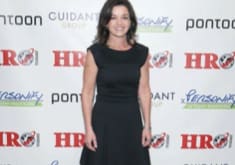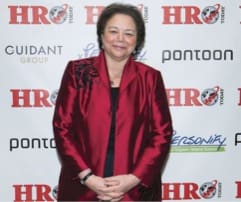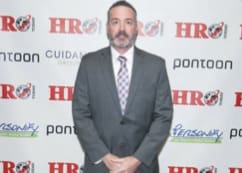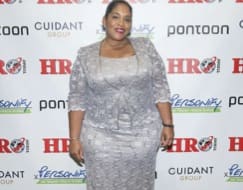The winners of the 2015 CHRO of the Year awards are blazing the trail for the future of HR.
By Debbie Bolla
Chief human resources officers are often tasked with some of the most challenging business initiatives since they revolve around an organization’s most important asset: their people. Pressing issues around talent, culture, and engagement have risen to the top of the human capital management agenda. In fact, topping this year’s Deloitte Human Capital Trends survey is culture and engagement, with 78 percent of leaders naming it a concern. Respondents citing these two factors as a very important issue nearly doubled, increasing from 26 percent to 50 percent. Having an engaged culture that supports the mission and vision of the business has become a competitive advantage in today’s hot talent market. CHROs need to keep their finger on the pulse in order to lead their organization’s talent into the future.
HRO Today magazine recognizes the strategic business value that CHROs bring to their organizations. They are both stewards and strategists, responsible for a company’s talent and performance blueprint, driving both business and the bottom line forward.
To recognize those CHROs who help drive workforce initiatives through innovation with measurable excellence, HRO Today annually presents the CHRO of the Year Award, the Sustainable Workforce of the Year Award, and the Lifetime Achievement Award at the HRO Today Awards Gala during the HRO Today Forum. These CHROs are responsible for providing leadership to ensure talent acquisition, retention, business growth, and a culture that can lead in a global workforce.
Nominees were evaluated based on the scope of their impact on their organization or community, the extent to which the nominees drove these initiatives, and the individual reputational or professional risk taken by each nominee. Here we present the winners for 2015.

In determining the Sustainable Workforce of the Year Award, judges considered several dimensions of the candidates’ performance, including the scope of the workforce’s impact on the community, measurable excellence in citizenship initiatives, and overall workplace innovation. This year’s winner is Jenn Mann, vice president of human resources for SAS Institute.
With a global workforce of more than 14,000 employees, SAS’ workforce initiatives have centered largely on talent management under Jenn Mann and her team. Mann approaches talent management as a shared strategy between HR and the rest of the business by developing strong partnerships with SAS leaders and having an understanding of their requirements for success.
“HR is ultimately responsible for ensuring organizations have the right talent needed to deliver to their customers and shareholders,” says Mann. “This requires innovative initiatives and programs focused on the entire employee experience including compelling work and growth opportunity, competent leadership and an enjoyable work environment.”
The vice president of human resources is very much aligned with the needs to the current workforce in order to drive employee productivity and loyalty. HR has recently led several initiatives based on feedback from the workforce in order to build a sustainable culture. SAS has launched programs around career growth and internal opportunities. A new online career center allows employees to find training and resources, and build a career path. Through another initiative, SAS hosted a job fair that showcased internal positions and as a result, approximately 300 employees took new positions.
A competitive benefits program is another differentiator in today’s tight talent market. HR implemented strategic changes to help employee see how SAS invests in them, including financial wellness programs, a young professional series and re- engagement programs.
“HR can make or break an organization,” she says. “Over time, companies have become more aware of the importance of a sustainable workforce and its link to customer satisfaction and business results.”
CHRO of the Year
In determining the CHRO of the Year award, judges considered the leadership skills of CHROs and evaluate the innovations driving their organizations’ transformative HR initiatives. The latter extends to such key HR responsibilities as talent acquisition and retention, the development of a workforce culture, and business growth from effective talent deployment and expense management.
In the for-profit category, this year’s winner is Kawel LauBach, chief human resources officer, at Mohegan Tribal Gaming Authority. In the non-profit category, the winner is Candace Osunsade, vice president of human resources at National Aquarium.
In an environment where team members say they feel more like family than employees, an organization is bound to face success. Add to the fact that the company’s in a customer-facing industry where service is a key differentiator and accolades like employer of choice start rolling in. Kawel LauBach has created an incredible workforce culture where employees are altruistic, efficient, productive, and actually enjoy coming to work.
“Mohegan Sun HR is the silent engine that has created the strategic advantage we currently have above our competitors,” he says. “In the gaming and hospitality industry, offerings can arguably be considered comparable, however the great differentiator is service.”
Under LauBach’s leadership, customer service and human resources are strategically managed under the same umbrella, which drives a strong, intertwined relationship between the two.
“We have primarily been able to develop a world-class experience for our employees who reciprocate this experience by providing a world-class experience to our guests,” he says.
LauBach has a unique approach to hiring: He believes that skills can be taught, but attitude is innate. To drive employee loyalty and productivity, LauBach is a big believer in rewards and incentives, and having an unique organizational culture that retains top performers. And it works: 94 percent of all team members state that they enjoy their job at Mohegan Sun, according to the organization’s annual survey.
The future of HR is wide open, says LauBach. “Human resources can revolutionize modern business by being the catalyst to change. We are just scratching the surface of engagement and truly beginning to see the positive impact that a creative and empowering culture has upon day-to-day business,” he explains. “As human resources professionals, we must innovate and question the long conscripted, antiquated and dogma-driven methods that hinder not drive productivity.”
Through Candace Osunsade’s voice and leadership, HR has transformed into a strategic business partner with a seat at the executive table at National Aquarium. Osunsade’s approach has created organizational alignment between all levels of leadership, creating efficiency and innovation.
“Human resources at the National Aquarium has evolved from being an administrative office focused on payroll, benefits, and policy enforcement to a strategic partner at every level,” says Osunsade. “Our impact is far-reaching, having played key roles in several of the most successful programs and enhancements. The HR team has, through strategic change management and dynamic relationship building, ensured a better understanding of the role that decisions around our greatest asset -our employees -play in creating and sustaining organizational performance and competitive advantage.”
She redeveloped existing processes and created structure that addressed and eliminated deficiencies. Soon adopting best practices became next practices, including strategic workforce planning, virtual wellness programs, nine-box succession planning, and goals- based merit and bonuses.
What’s coming next? “When properly placed, staffed, and led, an HR team can accomplish anything. Having a role that requires understanding of every facet of the business gives HR a unique perspective within an organization and a ‘leg up’ when it comes to driving and leading culture,” she says.
“In order to do that, it is imperative that HR have an unimpeded line to the executive office: The CHRO can and should be the CEO’s strongest resource! Often, functional leaders think they know what they need, but they lack the specific expertise of an HR professional to solve the full-breadth of the challenge. If a CHRO is willing to navigate risk, challenge process, and push for programs that will bring results, he/she can and will have a huge impact on driving the business forward.”

This year’s lifetime achievement award winner, Johnna Torsone, executive vice president and chief human resources officer of Pitney Bowes, has an impressive 25-year tenure at the landmark organization. As the company has transitioned over the years, Torsone has been at the forefront, leading training and employee development to ensure successful transformation.
“HR is both a leader and an enabler of the Pitney Bowes global transformation on multiple levels of the company. This involves culture, a skills shift, and employee engagement,” says Torsone. “It’s moving the culture to a more client-focused organization, and it’s about building a sense of commitment to the company as a whole.”
Pitney Bowes shows its commitment to its employees through several of Torsone’s initiatives. She developed a values-based healthcare program that has helped employees manage chronic conditions, and an employee wellness program that encourages employees to stay healthy through onsite clinics and subsidized healthy choices at company cafeterias.
“The relationship with employees is a strong component to the business’ ability to be sustainable,” she says. “I have tried to create an HR organization that understands the business, and also understands the leverage points that we bring to the table to help drive that business in as positive a way as possible.”
Torsone has also led the company’s executive succession planning and has transitioned four of the nine CEOs in her history at Pitney Bowes. Through effective change management, her strategic assistance allowed the transitioning CEOs to recruit, retain, and develop the management teams that they needed to execute their strategies.
“HR’s role in the culture of any company, especially during transformation, is all about developing the right leadership,” she says.
What else can HR achieve? “HR has the power to create the strong relationship between a company and its employees, which is the foundation of a sustainable business,” she says. “I don’t see myself as an HR leader. I see myself as a business leader with the responsibility to manage an organization that enables the business to be successful.”
















